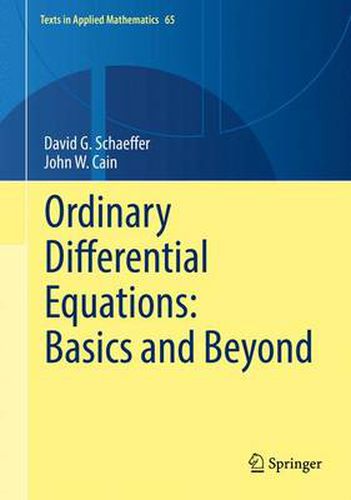Readings Newsletter
Become a Readings Member to make your shopping experience even easier.
Sign in or sign up for free!
You’re not far away from qualifying for FREE standard shipping within Australia
You’ve qualified for FREE standard shipping within Australia
The cart is loading…






This book develops the theory of ordinary differential equations (ODEs), starting from an introductory level (with no prior experience in ODEs assumed) through to a graduate-level treatment of the qualitative theory, including bifurcation theory (but not chaos). While proofs are rigorous, the exposition is reader-friendly, aiming for the informality of face-to-face interactions.
A unique feature of this book is the integration of rigorous theory with numerous applications of scientific interest. Besides providing motivation, this synthesis clarifies the theory and enhances scientific literacy. Other features include: (i) a wealth of exercises at various levels, along with commentary that explains why they matter; (ii) figures with consistent color conventions to identify nullclines, periodic orbits, stable and unstable manifolds; and (iii) a dedicated website with software templates, problem solutions, and other resources supporting the text (www.math.duke.edu/ode-book).
Given its many applications, the book may be used comfortably in science and engineering courses as well as in mathematics courses. Its level is accessible to upper-level undergraduates but still appropriate for graduate students. The thoughtful presentation, which anticipates many confusions of beginning students, makes the book suitable for a teaching environment that emphasizes self-directed, active learning (including the so-called inverted classroom).
$9.00 standard shipping within Australia
FREE standard shipping within Australia for orders over $100.00
Express & International shipping calculated at checkout
This book develops the theory of ordinary differential equations (ODEs), starting from an introductory level (with no prior experience in ODEs assumed) through to a graduate-level treatment of the qualitative theory, including bifurcation theory (but not chaos). While proofs are rigorous, the exposition is reader-friendly, aiming for the informality of face-to-face interactions.
A unique feature of this book is the integration of rigorous theory with numerous applications of scientific interest. Besides providing motivation, this synthesis clarifies the theory and enhances scientific literacy. Other features include: (i) a wealth of exercises at various levels, along with commentary that explains why they matter; (ii) figures with consistent color conventions to identify nullclines, periodic orbits, stable and unstable manifolds; and (iii) a dedicated website with software templates, problem solutions, and other resources supporting the text (www.math.duke.edu/ode-book).
Given its many applications, the book may be used comfortably in science and engineering courses as well as in mathematics courses. Its level is accessible to upper-level undergraduates but still appropriate for graduate students. The thoughtful presentation, which anticipates many confusions of beginning students, makes the book suitable for a teaching environment that emphasizes self-directed, active learning (including the so-called inverted classroom).